What do the numbers mean on the sidewall of your tire? At first glance, you look at your tire sidewall and think, “’Do I need a super secret decoder ring to read this?” In addition to the model name of the tire there is a series of numbers that at first, you don’t deem important. However, these numbers are extremely helpful, especially when it’s time to replace your tires. Here’s a quick breakdown to help you decipher one of the best kept secrets in the automotive world: How do you read tire sizes?
TIRE SIZE
Example: P225/50/R17 98H
P identifies your tire as a Passenger Tire. The P stands for PMetric. If your tire size starts with LT rather than a P than it identifies the tire as a Light Truck tire.
225 identifies the tire section width, which is the measurement of the tire from sidewall to sidewall in millimeters. This measurement varies depending on the rim to which it is fitted.
(There are 25.4 millimeters per 1 inch.)
50 is the two-figure aspect ratio. This percentage compares the tire's section height with the tire's section width. For example, this aspect ratio of 50 means that the tire's section height is 50% of the tire's section width.
R indicates the construction used within the tires casing. R stands for radial construction. B means belted bias and D stands for diagonal bias construction.
17 The last dimension listed in the size is the diameter of the wheel rim, which is most often measured in inches.
LOAD INDEX AND SPEED RATING
Example: P225/50/R17 98H
The load index and speed rating, or service description, are the numbers that follow the tire size.
The load index tells you how much weight the tire can support when properly inflated. Load indices range from 75 - 105 for passenger tires, with each numeric value corresponding to a certain carrying capacity. The carrying capacity for each value can be found on a load index chart. On each U.S. passenger car tire, the load limit is listed in pounds. European tires have the load limit listed in kilograms and sometimes pounds.
The carrying capacity for each value can be found on a load index chart. On each U.S. passenger car tire, the load limit is listed in pounds. European tires have the load limit listed in kilograms and sometimes pounds.
H Speed ratings are represented by letters ranging from A to Z. Each letter coincides to the maximum speed a tire can sustain under its recommended load capacity. For instance, S is equivalent to a maximum speed of 112 mph. Even though a tire can perform at this speed, Continental Tire does not advocate exceeding legal speed limits.
Rating | Maximum Speed |
Q | 100 MPH |
S | 112 MPH |
T | 118 MPH |
U | 124 MPH |
H | 130 MPH |
V | 149 MPH |
W | 168 MPH |
Y | 186 MPH |
Z | Over 149 MPH |
DOT Serial Number
The "DOT" symbol certifies the tire manufacturer's compliance with the U.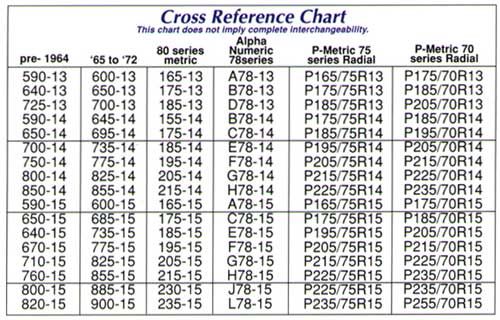 S. Department of Transportation (DOT) tire safety standards. Tires made in the United States have the DOT serial number located on the inside sidewall near the rim.
S. Department of Transportation (DOT) tire safety standards. Tires made in the United States have the DOT serial number located on the inside sidewall near the rim.
Below is a description of the serial number. Starting with the year 2000, four numbers are used for the Date of Manufacture, the first two numbers identify the week and the last two numbers identify the year of manufacture. This identifies how old a tire is.
Prior to year 2000 three numbers are used for the date of manufacture, first two numbers identify the week and the last number identifies the year of manufacture. To identify tires manufactured in the 90s, a decade symbol (a triangle on its side) is located at the end of the DOT serial number.
At first glance, you look at the sidewall of your tire and think, “’Do I need a super secret decoder ring to read this?” In addition to the model name of the tire there is a series of numbers that at first, you don’t deem important.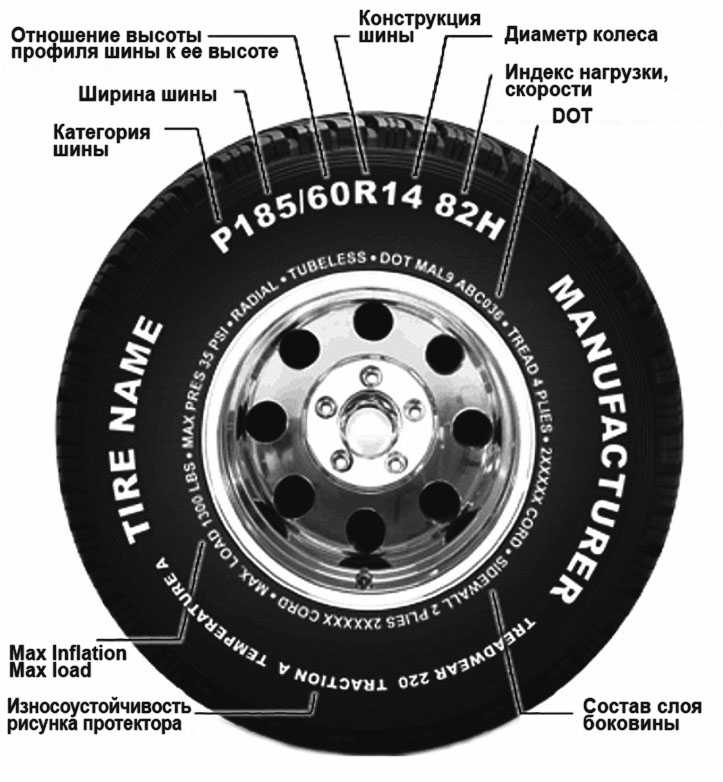 However, these numbers are extremely helpful, especially when it’s time to replace your tires. Here’s a quick breakdown to help you decipher one of the best kept secrets in the automotive world.
However, these numbers are extremely helpful, especially when it’s time to replace your tires. Here’s a quick breakdown to help you decipher one of the best kept secrets in the automotive world.
TIRE SIZE
Example: P225/60/R16 94V
P identifies your tire as a Passenger Tire. The P stands for PMetric. If your tire size starts with LT rather than a P then it identifies the tire as a Light Truck tire.
225 identifies the tire section width, which is the measurement of the tire from sidewall to sidewall in millimeters. This measurement varies depending on the rim to which it is fitted.
(There are 25.4 millimeters per 1 inch.)
60 is the two-figure aspect ratio. This percentage compares the tire's section height with the tire's section width. For example, this aspect ratio of 60 means that the tire's section height is 60% of the tire's section width.
R indicates the construction used within the tires casing.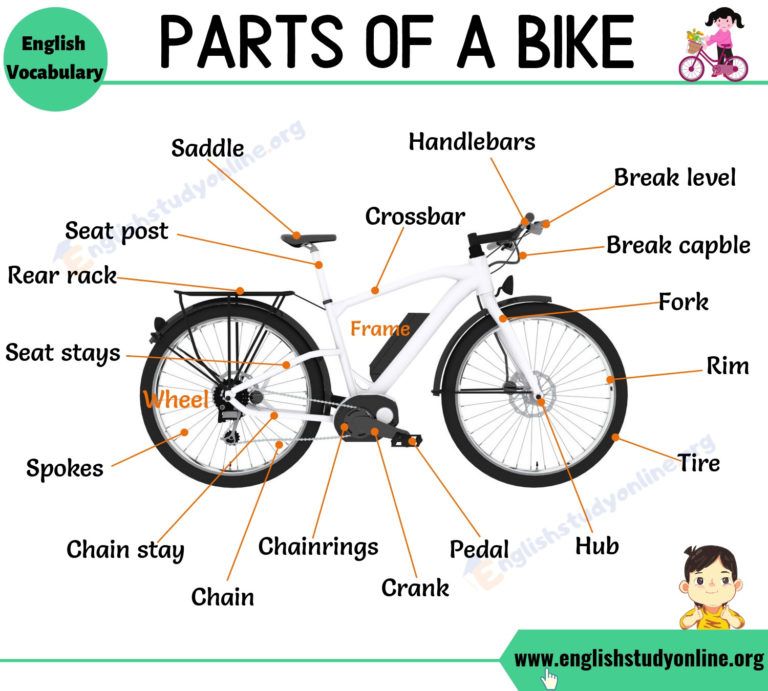 R stands for radial construction. B means belted bias and D stands for diagonal bias construction.
R stands for radial construction. B means belted bias and D stands for diagonal bias construction.
16 The last dimension listed in the size is the diameter of the wheel rim, which is most often measured in inches.
If a tire size reads, LT235/75R15 104/101S, the LT indicates that this tire is meant for Light Truck use. These tires are made for light-duty and heavy-duty pickup trucks (typically ½ ton, ¾ ton, or 1-ton load capacity), SUVs and vans. These tires fall into one of three categories:
Numeric– designed to carry heavy cargo loads and/or tow trailers.
Wide Base – designed to carry heavy cargo loads and/or tow trailers on a wheel rim with a diameter of 16.5 inches.
Flotation – wider, oversized tires designed to carry heavy cargo loads and/or tow trailers on loose surfaces such as sand, gravel, or dirt.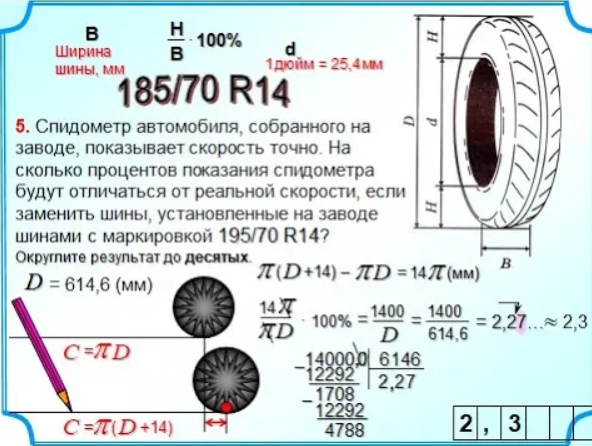
Tires beginning with a ST (for example ST175/80R13) indicate a Special Trailer tire and should only be used on car, boat or utility trailers.
LOAD INDEX AND SPEED RATING
Example: P225/60/R16 94V
The load index and speed rating, or service description, are the numbers that follow the tire size. In the example above, the first two digits (94) represent the tire’s load index and the single letter (V) identifies the tire’s speed rating. But what does that mean?
94 - The load index tells you how much weight the tire can support when properly inflated. Load indexes typically range from 70 - 126, with each numeric value corresponding to a certain carrying capacity. The higher toe tire’s load index number, the greater its load carrying capacity. The carrying capacity for each value can be found on a load index chart. On each U.S. passenger car tire, the load limit is listed in pounds. European tires have the load limit listed in kilograms and sometimes pounds.
When it comes to Light Truck (LT) or Special Trailer (ST) tires, there are two load indexes branded (example - LT235/75R15 104/101S). In this example, the 104 corresponds to 1,984 pounds (see chart below), and the 101 corresponds to 1,819 pounds. So which number do you use? The answer is, it depends on the how the tire is being used…and it can change.
LT tires are commonly used on trucks with dual rear wheels and are branded with two load indexes. The first number indicates load carrying capacity if the tire is installed on a truck with a single-wheel rear axle, and the second number applies when the tire is used in a dual rear application.
V - Speed ratings are represented by letters ranging from A to Z. Each letter coincides to the maximum speed a tire can sustain under its recommended load capacity. For instance, V is equivalent to a maximum speed of 149 mph. Even though a tire can perform at this speed General Tire does not advocate exceeding legal speed limits.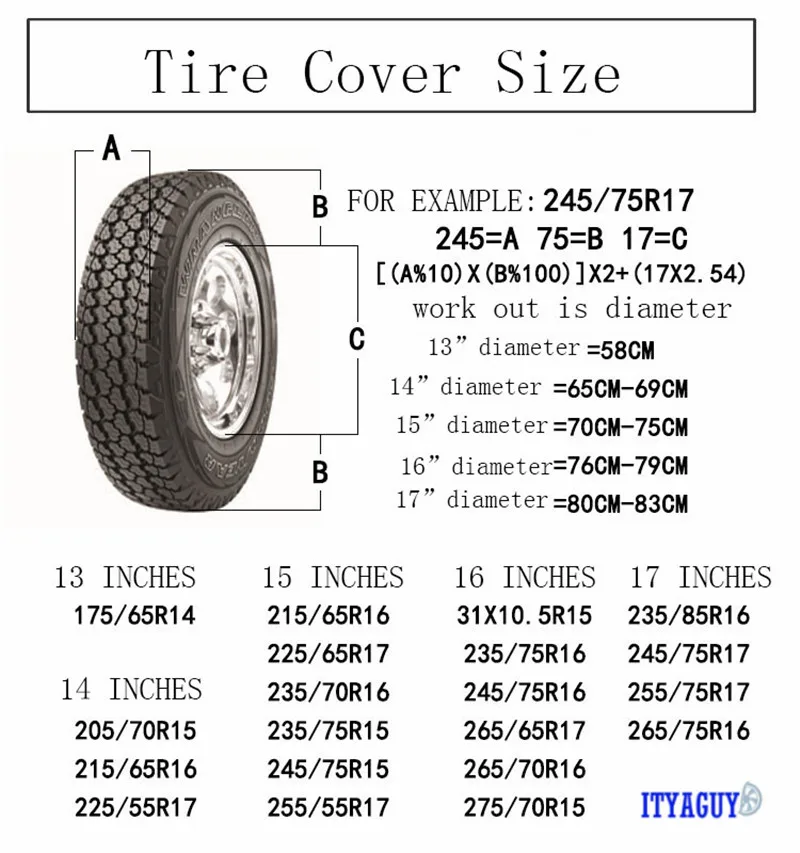 It is also important to note that speed ratings only apply to tires that have not been under-inflated, overloaded, damaged, or altered.
It is also important to note that speed ratings only apply to tires that have not been under-inflated, overloaded, damaged, or altered.
Rating Maximum Speed Use
L 75 MPH Off-Road & Light Truck tires
M 81 MPH Temporary Spare tires
N 87 MPH
P 93 MPH
Q 99 MPH Winter tires (w/or w/out studs)
R 106 MPH H.D. Light Truck tires
S 112 MPH Family Sedans & Vans
T 118 MPH Family Sedans & Vans
U 124 MPH
H 130 MPH Sport Sedans & Coupes
V 149 MPH Sports Cars, Sport Sedans & Coupes
Z Over 149 MPH Sports Cars
There are more inscriptions and drawings on the sidewall of any tire than there is free space. Each icon has its own function, but it is not always possible to reveal its ins and outs without a hint. In addition, a completely new marking has appeared this year.
The tire's make and model are usually printed in the largest font. It is understandable: this is what the buyer pecks at. It is interesting that the same data in encrypted form is also on the protector - in the form of thin colored stripes. They are needed in order to be able to identify the rubber lying in the warehouse, because only its working surface is in the field of view of the workers.
It is understandable: this is what the buyer pecks at. It is interesting that the same data in encrypted form is also on the protector - in the form of thin colored stripes. They are needed in order to be able to identify the rubber lying in the warehouse, because only its working surface is in the field of view of the workers.
Tire size is a mystery for many. It seems that there are no problems in everyday life: what numbers are indicated on the sidewall of a standard tire, with such you need to buy a winter or summer one to replace a worn one. But what exactly do they mean? For example, let's take the index 225/50 R17 98 N on the Continental tire.
Continental PremiumContact 6
Continental PremiumContact 6
Additional characters may be assigned to the tire model name. For example, SUV means focusing on crossovers and SUVs (reinforced sidewall, large load capacity), C - on commercial vehicles (from the English cargo, "cargo").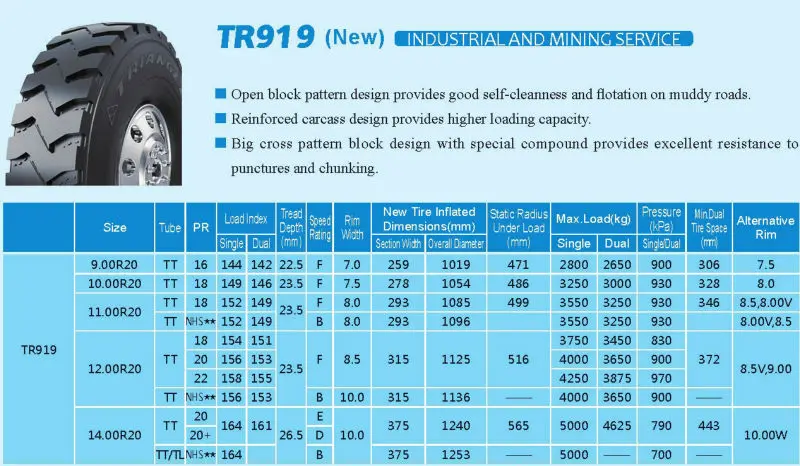 It happens that a tire is welded specifically for a particular auto concern and is intended for primary assembly on a conveyor or sale through its official dealers. So, at Continental, the indices A0 and R01 are reserved for Audi, J for Jaguar, N0, N1, N2 for Porsche, M0, M01 for Mercedes.
It happens that a tire is welded specifically for a particular auto concern and is intended for primary assembly on a conveyor or sale through its official dealers. So, at Continental, the indices A0 and R01 are reserved for Audi, J for Jaguar, N0, N1, N2 for Porsche, M0, M01 for Mercedes.
Related materials
7 main principles for choosing summer tires
Summer tires do not carry any additional markings. The letters M + S from the English Mud, “mud”, and Snow, “snow”, are on tires that are basically suitable for cold climates, but are not purely winter. The latter are indicated only by the snowflake and mountain peak icon. The inscription All season (or the abbreviation AS), we think, does not need to be translated. On top-level tires, you can find an image of an umbrella. This is an indication of excellent performance on wet pavement.
Often, information about the maximum load and maximum pressure is put on the tire in plain text, without allegorical codes and pictograms. Look for the phrases Max load and Max pressure respectively.
Look for the phrases Max load and Max pressure respectively.
Tires with reinforced sidewalls are gaining popularity around the world, allowing you to drive several tens of kilometers after losing pressure. Usually they simply write Run Flat, although there are also original designations. So, the Continental concern puts the SSR marking on puncture-resistant models.
European tire company websites list rubber labels for noise, efficiency and environmental friendliness. The first is indicated by a number from 1 (quiet) to 3 (loud). Wet grip coefficient and fuel consumption coefficient is a letter from A (best) to G (worst). In Russia, such a classification is not yet applied.
One of the key parameters is the date of manufacture of the tire. You should also look at it when buying a new set, not to mention a used one. It is not recommended to ride on tires for more than five or six years from the date of issue, although it is not prohibited either by law or by the manufacturers themselves.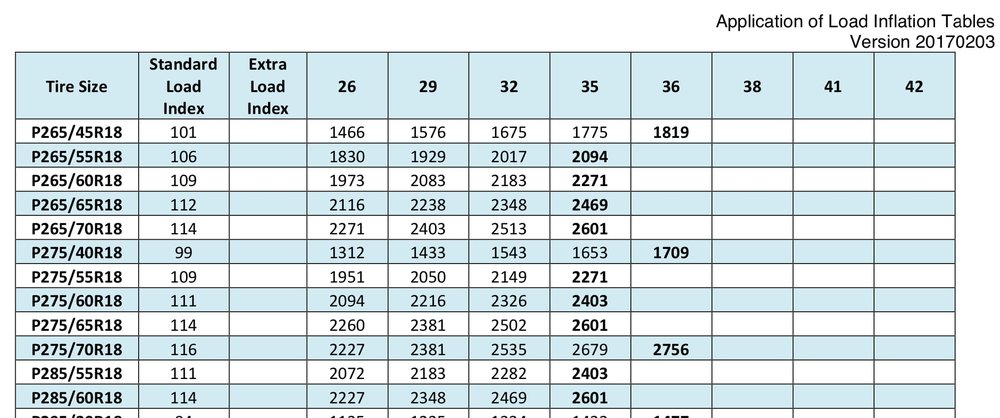 The date of manufacture is indicated by four digits in an oval. The first two are a week, the second two are a year. For example, 3119stands for "boil" of the 31st week of 2019.
The date of manufacture is indicated by four digits in an oval. The first two are a week, the second two are a year. For example, 3119stands for "boil" of the 31st week of 2019.
Related materials
The main mistakes when installing tires: follow the masters
When mounting asymmetric rubber on wheels, the words Outside (“outer side”) and Inside (“inner side”) will tell you the correct location. On the wheels installed on the car, the owner should see only the first inscription. If there are none on the tires, there are no outer and inner sides on the tread, it is symmetrical in operation.
On both sides of the directional models, the word Rotation is mandatory. The arrow located next to it will tell you the direction of rotation of the wheel when the car moves forward.
Continental tires are marked with TWI for critical tread wear marks. On summer models, they are supplemented by indicators with cross and drop marks. They signal that the rubber has not yet reached the minimum tread height, but it is no longer enough to feel confident in the rain.
On summer models, they are supplemented by indicators with cross and drop marks. They signal that the rubber has not yet reached the minimum tread height, but it is no longer enough to feel confident in the rain.
And there are also VAI indicators on the tread. They are applied symmetrically in the left and right shoulder areas. With the correct installation of the wheel, they change as the rubber wears in exactly the same way. Discrepancies are a reason to visit the wheel alignment stand. So far, the technology is used only on truck tires.
Russia introduces mandatory tire labeling in order to combat "gray" deliveries. The unique Data Matrix code is highly secure and readable through several layers of packaging. It is declared that it cannot be faked or copied, and the information sewn into it is readable even if it is partially damaged. The code can be decrypted by each buyer. To do this, it must be scanned with a special mobile application "Honest Sign". After that, information about the manufacturer and importer, the characteristics of the product, the date of putting into circulation in Russia will be displayed on the screen of the gadget.
After that, information about the manufacturer and importer, the characteristics of the product, the date of putting into circulation in Russia will be displayed on the screen of the gadget.
Compulsory marking introduced from November 1, 2020. From this day on, production, import to Russia and purchase from manufacturers and importers of rubber without marks of the established sample are prohibited. Since December 15, the entire circulation of non-marking tires has been banned. Warehouse balances were allowed to be tagged until March 1, 2021.
Mandatory marking introduced from November 1, 2020. From this day on, production, import to Russia and purchase from manufacturers and importers of rubber without marks of the established sample are prohibited. Since December 15, the entire circulation of non-marking tires has been banned. Warehouse balances were allowed to be tagged until March 1, 2021.
Continental has been at the forefront of technology testing in Russia and is fully prepared for its implementation. During 2019, together with hundreds of other companies from different industries in our country, he generated thousands of codes, working out the system. Moreover, on a global scale, the company has already prepared solutions for integrating electronic chips into tires, which allow monitoring their condition, including the degree of wear.
During 2019, together with hundreds of other companies from different industries in our country, he generated thousands of codes, working out the system. Moreover, on a global scale, the company has already prepared solutions for integrating electronic chips into tires, which allow monitoring their condition, including the degree of wear.
| 86 | 530 | 96 | 710 | ||||||
| 77 | 412 | 87 | 545 | 97 | 730 | ||||
78 | 560 | 98 | 750 | ||||||
| 79 | 437 | 89 | 580 | 99 | 775 | ||||
| 80 | 9009 500076 90 | 600 | 100 | 800 | |||||
| 81 | 462 | 91 | 615 | 101 | 825 | ||||
| 820003 | 92 | 630 | 102 | 850 | |||||
| 83 | 487 | 93 | 650 | 103 | 8750002 500 | 94 | 670 | 104 | 900 |
| 85 | 515 | 95 | 690 |
| Speed index | Q | R | S | T | H | V | W | Y | VR | ZR | ZR (Y) ZR (Y)0561 Photo: Continental Badges and letters on tires: deciphering all the symbols! There are more writing and graphics on the sidewall of any tire than there is free space. Each icon has its own function, but it is not always possible to reveal its ins and outs without a hint. In addition, a completely new marking has appeared this year.Badges and letters on tires: deciphering all the designations! Badges and letters on tires: deciphering all the designations! There are more writing and graphics on the sidewall of any tire than there is free space. Each icon has its own function, but it is not always possible to reveal its ins and outs without a hint. In addition, a completely new marking has appeared this year.Badges and letters on tires: deciphering all the designations! Our new video Large crossover Lada, almost VW from Kaluga, "native" Muscovites: plans for the auto industry revealed0003 So here's the deal! 7 imperceptible reasons for excessive fuel consumption Frame, eternal diesel, LEDs, a bunch of chips . Did you like the note? Subscribe and you will always be in the know! Driving in Zen News smi2.ru how to read, what it means, what it takes :: AutonewsPhoto: Shutterstock adv.rbc.ru See also Numbers and letters on a car tire provide all the necessary information about it. True, it is not easy to read them - here, even in the designation of one parameter, several measurement systems can be used simultaneously. In addition, many values are expressed in special indices. We decipher all important labels for the buyer.
adv.rbc.ru What is a tire markingA tire marking is information about its properties printed on the outer rim. This is a huge amount of useful information. Here are the parameters of the tire that can be read from it itself:
What does tire marking mean? Therefore, these data are usually the largest and most visible.The size designation is written in the form XXX/XX R XX. For example 225/65 R17. The first three digits are the tire width in millimetres. In our case - 225 mm. The second digit is the height, but not in millimeters, but as a percentage of the width. In our case, its height is 146.25 mm (225 * 0.65). The third number after R is the outside diameter of the wheel or the inside diameter of the tire in inches. In our case, this is 17 inches or 43.18 cm. Do not confuse - this is the radius, not the diameter. The letter R itself stands for the radial design of the tire, which confuses many. Sometimes Radial can be written separately on the bus - the meaning is the same. In addition to the radial, there is also a diagonal design (D), but these are not found today. Load and speed indices Two numbers and a letter immediately follow the size. Two digits - capacity or load index. This is a complex system of values, in which the larger the number, the greater the load, but the step size between the values is not constant. Therefore, it is easier to just know the most common of them:
The index value is the load on each wheel individually. To calculate the total load capacity, multiply by 4. This value can also be written elsewhere in a simpler form: Max load - xxx kg. Photo: Shutterstock The letter after the two digits of the load index is the index of the maximum speed for which the tire is designed. It starts with A, but the values relevant for modern machines start from the second half of the Latin alphabet:
This is not the limit, but the maximum "comfortable" value. In exceptional cases, you can even exceed it by 20-30%, but it is better to avoid this. Date of manufactureAnother key parameter is the timing of the tire. Usually it is indicated in a rounded rectangle, but may be without a frame. The first two digits are the week, and the second two are the year. Wear resistance, grip, temperatureAlso, three more parameters are usually indicated on the tire - wear resistance margin, grip quality class and temperature index. The wear index is denoted by the word treadwear. Its unit is 480 km. Multiply the number next to that word by that value. If treadwear is 400, it means that under test conditions at the test site, such a tire has worn out after driving 192,000 km. Also, this parameter can be designated separately as the abbreviation TWI. Traction is a measure of how well a tire grips on wet road surfaces. It has values from AA - the best level, to CC - the worst. Tires for regular passenger cars usually have class A, and the highest class is for sports and racing. Temperature is the tire's ability to withstand heat when driving at a certain speed.
For modern passenger car tires, the most common value for this index is A. Photo: Shutterstock European certificateThe letter E with a number indicates that the tire complies with the rules of the European Tire Standards Association (ETRTO) and has a corresponding certificate . The number indicates the country that issued it - but this does not matter, since the ETRTO requirements are the same. In this case, the tire can be produced anywhere. Suitable weatherThe weather conditions in which it is permissible to use this tire are also usually indicated:
Winter tires must have a first, second or third designation. Suitable vehicle classOn some tires you can find the designation of the type of car for which they are intended:
Other designationsIn addition, the tire may be marked:
|